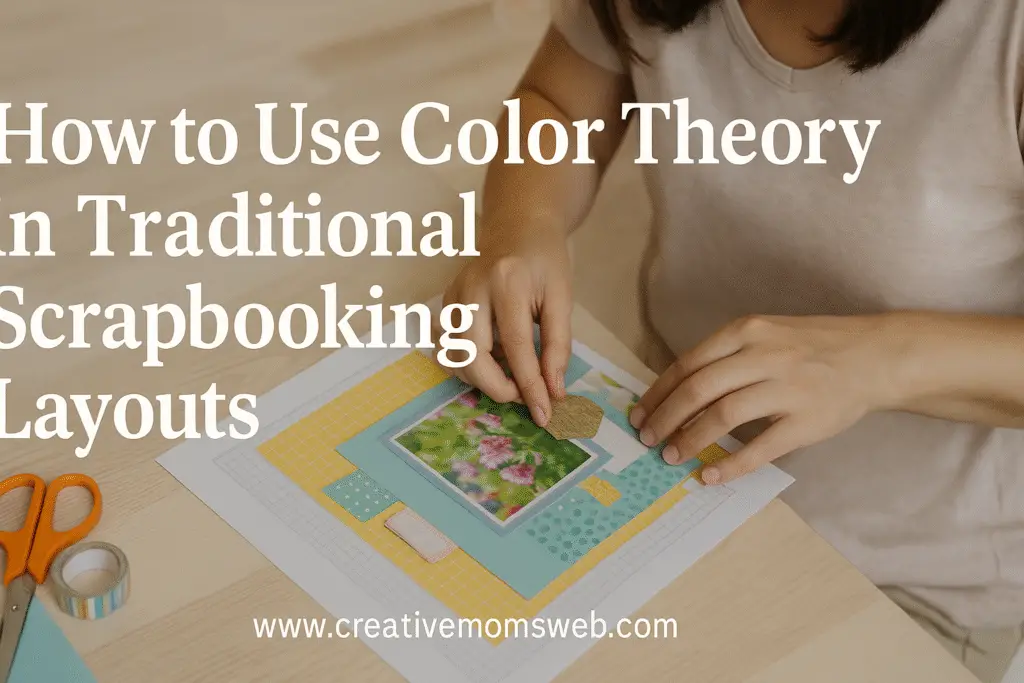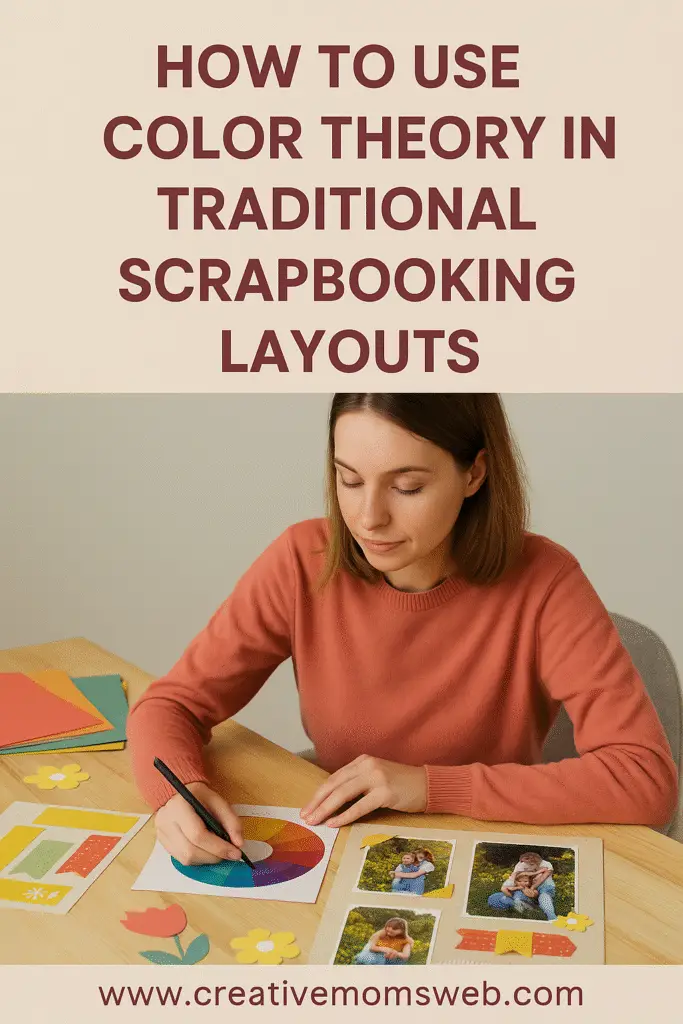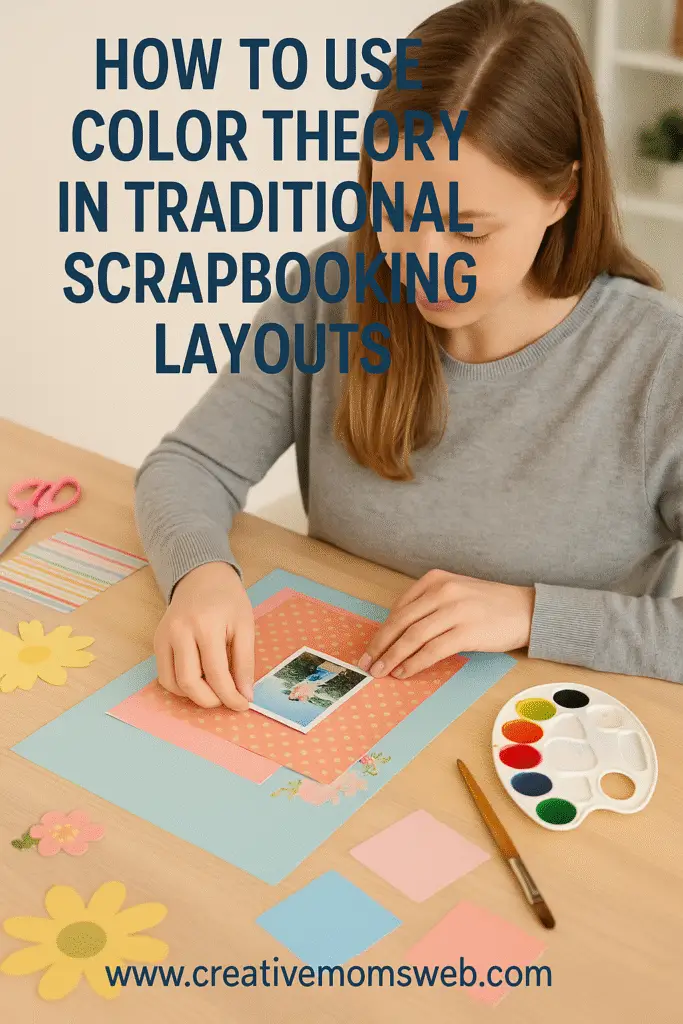When it comes to scrapbooking, choosing the right colors isn’t just about making things look pretty — it’s about setting a mood, telling a story, and guiding the viewer’s eye across your page. That’s where color theory comes in!
Whether you’re new to scrapbooking or looking to level up your designs, understanding basic color theory can help you create cohesive, eye-catching layouts that truly reflect the memories you’re preserving. Let’s dive into how you can use color theory in your traditional scrapbooking layouts.

What Is Color Theory?
Color theory is a set of principles that guides how colors work together. It’s based on the color wheel, which includes:
- Primary colors: Red, Blue, Yellow
- Secondary colors: Green, Orange, Purple (made by mixing two primary colors)
- Tertiary colors: Combinations of primary and secondary colors (e.g., red-orange)
Understanding how these colors interact can help you create layouts that are vibrant, balanced, and full of emotion.
How to Use Color Theory in Traditional Scrapbooking Layouts
1. Choose a Color Scheme
Start by selecting a color scheme. Here are a few popular ones that work beautifully in scrapbooking:
🎨 Monochromatic
Uses one color in different shades and tints.
Perfect for: Elegant or calming layouts.
🎨 Analogous
Uses colors next to each other on the color wheel (e.g., blue, blue-green, green).
Perfect for: Soft, harmonious pages.
🎨 Complementary
Uses colors opposite each other on the color wheel (e.g., red and green, blue and orange).
Perfect for: Bold, high-contrast layouts.
🎨 Triadic
Uses three evenly spaced colors (like red, yellow, and blue).
Perfect for: Vibrant, playful pages.

2. Match the Mood of Your Photos
Color sets the emotional tone of your scrapbook page.
- Warm colors (reds, oranges, yellows) evoke excitement, joy, or passion.
- Cool colors (blues, greens, purples) bring a sense of calm, peace, or reflection.
- Neutrals (white, beige, gray, black) help balance out bold colors and add elegance.
💡 Tip: Let your photo be the guide. A sunny picnic layout might look great with warm tones, while a quiet beach walk could shine with cool, muted shades.
3. Use a Dominant Color + Accent Colors
Choose one color to dominate the layout and use one or two accent colors to highlight key elements like:
- Titles
- Embellishments
- Borders
- Photo mats
This keeps your design clean, focused, and visually balanced.
4. Consider Contrast and Readability
When layering papers or adding text, make sure the colors contrast enough so everything is easy to see. For example:
- Use light-colored journaling blocks on dark backgrounds.
- Add dark outlines or shadows to make elements stand out.
5. Balance Busy Patterns with Solid Colors
Mixing patterned paper with solids prevents your layout from looking too cluttered. If you have a busy floral background, pair it with solid cardstock photo mats or journaling spots in coordinating colors.
6. Let Nature and Life Inspire You
Look around! Nature offers the most beautiful and effortless color combinations — think of a sunset, a flower garden, or your child’s colorful toys. Use these everyday palettes as inspiration for your next page.
7. Test Your Palette Before You Commit
Before gluing anything down, lay your papers and embellishments together to see how the colors play off each other. Snap a photo of your arrangement to see it with fresh eyes.
Final Thoughts
Using color theory in your traditional scrapbooking layouts isn’t about following strict rules — it’s about using color intentionally to create harmony, emotion, and storytelling on every page. Once you start applying these techniques, you’ll see how color choices can truly transform your designs.

